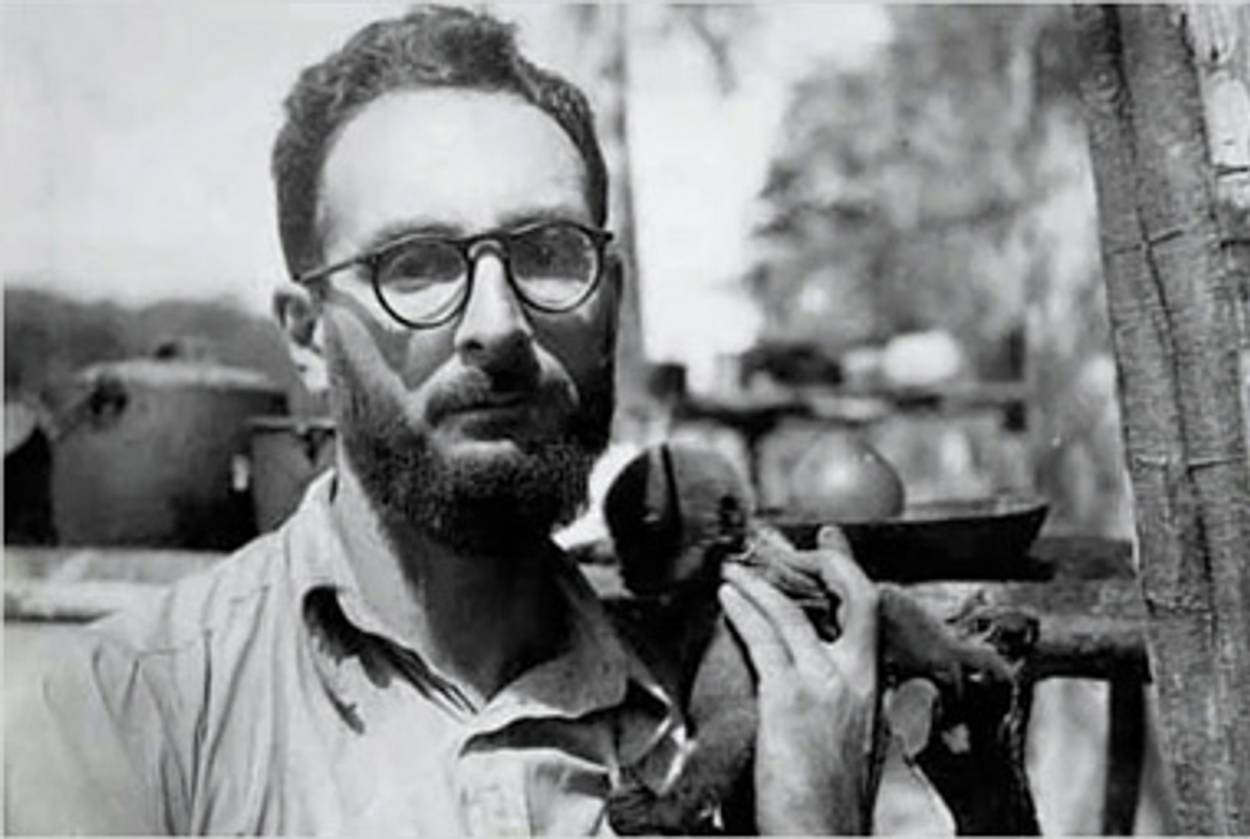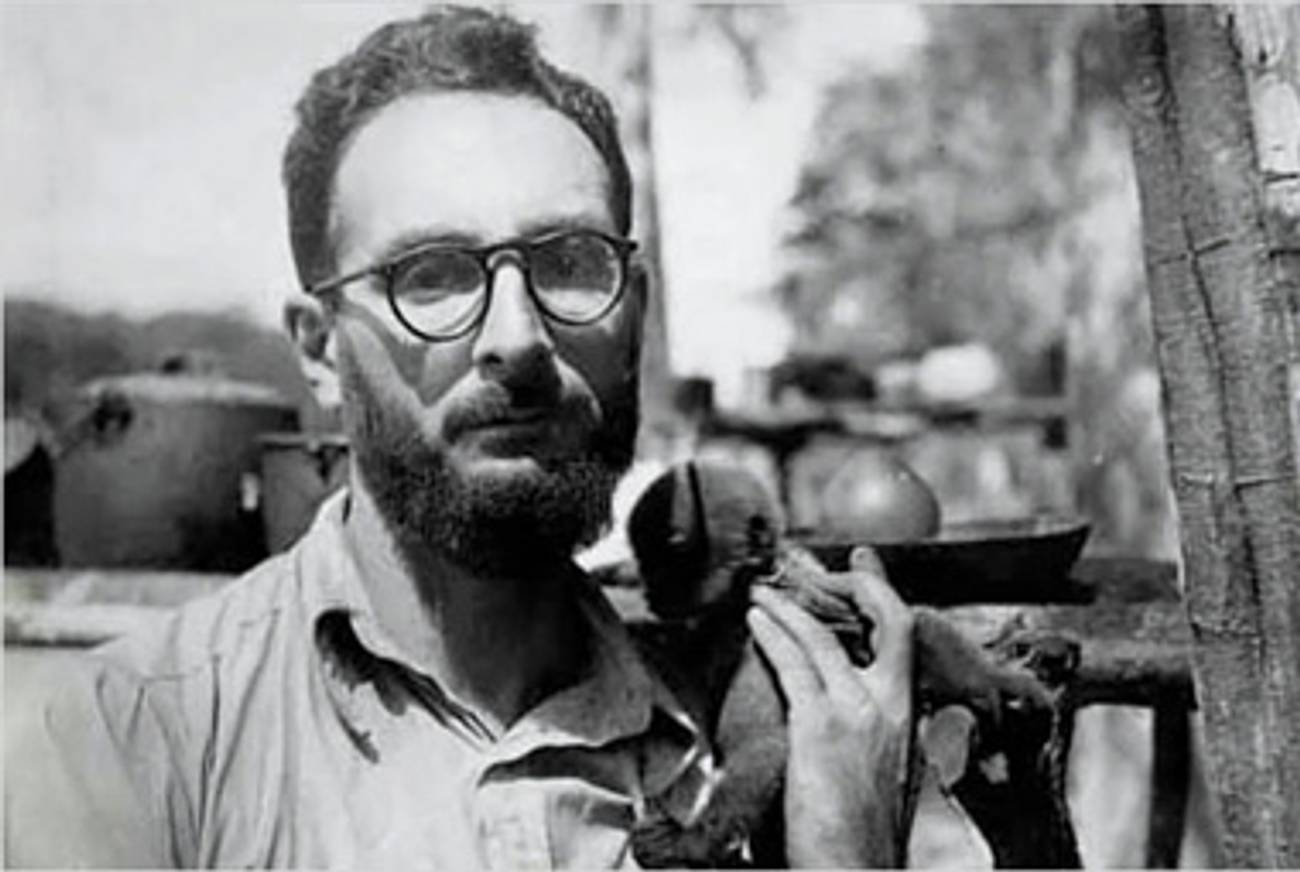The Structuralist
A biography explores Claude Lévi-Strauss’ fascination with what makes cultures tick




In Claude Lévi-Strauss: The Poet in the Laboratory (Penguin Press, $29.95), Patrick Wilcken has written the biography not just of a man, but of an intoxicating intellectual moment. This was the moment of structuralism, a new way of thinking about human culture that emerged in France in the 1950s and enjoyed a worldwide vogue. The literary critic Roland Barthes, the cultural historian Michel Foucault, the psychoanalyst Jacques Lacan—all were structuralists of one sort or another, and all declared their indebtedness to Claude Lévi-Strauss, the founder of “structural anthropology.” Half a century later, all these names are still by-words for strenuous difficulty and theoretical sophistication; though they are classics by now, they retain the acrid perfume of the avant-garde. When people express contempt or dismay about “French theory,” it is usually the structuralists they have in mind.
It is a wonderful irony, then, that this most cutting-edge and Parisian of movements can be traced to a moment of epiphany in a primitive Indian village in western Brazil. In 1936, Lévi-Strauss and his wife Dina led an anthropological expedition to study the indigenous peoples of this region, at that time barely accessible from the big cities of Brazil’s Atlantic coast. One of the tribes they visited was the Bororo, and though Lévi-Strauss spent just three weeks with them, Bororo culture and myth would lie at the heart of his work for the next 60 years.
What fascinated Lévi-Strauss was not the picturesque elements of Bororo life—what Wilcken calls “the fetishized objects of the Western imagination: penis sheaths, multicolored headdresses, nose feathers, lip ornaments and body paint.” Rather, he became obsessed with the way the Bororo village was laid out. By diagramming the location of the huts, Lévi-Strauss came to realize that they reflected the intricate social hierarchy of the tribe. As Wilcken summarizes:
An invisible north-south axis divided the village into moieties (that is, two intermarrying descent groups); within the moieties were clans, and within the clans, a tripartite system of castelike grades. Marriage was permitted only between moieties and within grades, with a procession of men, once married, crossing the yard to live on the other side—their in-laws’ huts. The village circle was then quartered by an east-west axis running parallel to the river, the upstreamers organizing the downstreamers’ funerals, and vice versa.
This elaborate organization, which Lévi-Strauss compared to a ballet, turned physical space into a map of social space, governing the lives and deaths of the Bororo. And it had evolved gradually, unselfconsiously, without the use of written language.
To Lévi-Strauss, this vision of culture as the product of hidden structures was immensely seductive. The Bororo, he said in a late interview, were “the great theoreticians of structuralism.” But it took a French academic mandarin like Lévi-Strauss to turn structuralism into a worldview, and even into a fad. (At the height of his fame, in 1970, Lévi-Strauss was photographed for Vogue by Irving Penn.) In a series of influential works, Lévi-Strauss proposed that incest taboos, kinship rules, culinary practices, and primitive myths—in all their bizarre, seemingly unnecessary complexity—could be similarly explained as the permutations of a few basic rules or structures. So, Barthes proposed in his famous study S/Z, could the European novel; so, Lacan wrote, could the unconscious itself.
Lévi-Strauss’ theoretical works were far too abstruse to reach a wide audience. Even fellow anthropologists were daunted, and skeptical, when Lévi-Strauss claimed to be able to reduce all myths to a mathematical formula—Fx(a): Fy(b)=Fx(b): Fa-1(y), if you’re keeping score at home. But he reached a broad audience with his 1955 book Tristes Tropiques, a memoir of his Brazilian fieldwork that stringently dispels the romantic myths of anthropological fieldwork. “Travel and travelers are two things I loathe,” the book begins, and Wilcken shows that Lévi-Strauss really meant it: After his Brazilian sojourn in the 1930s, he did little fieldwork, and even in Brazil his research was often hasty and haphazard. Wilcken’s subtitle is “The Poet in the Laboratory,” not the poet in the jungle or the desert, and most of Lévi-Strauss’ career was spent in the well-equipped, well-financed institutions of French academia.
Lévi-Strauss was, in fact, a creature of Paris, a species of master-thinker that could flourish nowhere else. He was born in Paris in 1908, to a Jewish family originally from Alsace—no relation to the jeans manufacturer, though he never escaped jokes and questions about it—and his childhood showed all the contradictions of the assimilated French Jewish bourgeoisie. His great-grandfather Isaac Strauss was a celebrated musician who worked with Berlioz and Offenbach and used his fortune to amass a collection of Judaica. His maternal grandfather was a rabbi, and when World War I broke out the 6-year-old Claude was sent to live with him in Versailles. Yet in Tristes Tropiques, he explains that Judaism remained foreign to him:
[My grandfather’s] house stood next to the synagogue and was linked to it by a long inner corridor. Even to set foot in that corridor was an awesome experience; it formed an impassable frontier between the profane world and that other world from which was lacking precisely that human warmth which was the indispensable condition to my recognizing it as sacred. Except at the hours of service the synagogue was empty; desolation seemed natural to it, and its brief spells of occupation were neither sustained enough nor fervent enough to overcome this. They seemed merely an incongruous disturbance.
It is tempting to wonder whether this estrangement from Judaism played a role in Lévi-Strauss’ search for the sacred in primitive cultures. Did his liminal position as a Jew—both inside and outside of French society—make him particularly suited to the role of sociologist, one who both inhabits a culture and stands outside of it at the same time? It is certainly suggestive that the masters of French sociology—Emile Durkheim, Marcel Mauss, and Lévi-Strauss—were all Jewish.
Yet Lévi-Strauss was sufficiently detached from Jewish concerns that, in the 1930s, he had little sense of the threat posed by Hitler. In 1935, Lévi-Strauss was one of a group of young French academics offered jobs at the newly founded University of Sao Paulo, and he spent the next four years mainly in Brazil. When he returned to France in 1939, it was just in time to be drafted into the French Army; his limited English was good enough to qualify him as a liaison officer, working with the British Army in northern France. When the German invasion led to the disintegration of his unit, he made his way south to the unoccupied zone, where his parents had also retreated.
Then, amazingly, in September 1940, Lévi-Strauss asked to be allowed to return to his old teaching job in Paris—that is, to go back to the Nazi-occupied zone. “Fortunately for Lévi-Strauss,” Wilcken writes, “the official dealing with the request … refused to send anyone with such an obviously Jewish name back into occupied France.” Asked about this episode in the 1980s, he blamed his own “lack of imagination” about the real danger of Nazism. Soon enough he began to realize his true position: When the Vichy government fired all Jewish professors, Lévi-Strauss “felt myself to be potential fodder for the concentration camp.”
He was rescued, like so many other European Jewish intellectuals, by an invitation to teach at the New School for Social Research, in New York. In fact, the war years turned out to be a sort of idyll for Lévi-Strauss: He enjoyed living in the Village, socializing with avant-garde artists like Max Ernst, and doing research at the Museum of Natural History and the New York Public Library. Crucially, it was in New York that he met another Jewish refugee, the linguist Roman Jakobson, who gave him his first exposure to structuralist ideas. When the war ended, Lévi-Strauss was appointed by the new Gaullist government as cultural attaché, charged with escorting French luminaries on visits to New York. By the time he returned to France, in 1948, he had already drafted his first major work, The Elementary Structures of Kinship.
From this point on, Wilcken’s biography has less to say about Lévi-Strauss’ life, which became quietly professorial, than about his work. Strikingly, even as he was becoming the world’s most famous anthropologist, Lévi-Strauss showed no appetite for further fieldwork. To write his magnum opus, the four-volume study Mythologies, he devoured thousands of books on native myth and sent out his own researchers to interview distant tribes. But he himself preferred to stay home in Paris, pondering and writing. “I try to be the place through which the myths pass,” he explained, in the quasi-mystical tone that made him such a charismatic teacher.
To one student who attended Lévi-Strauss’ seminars at the Collège de France, “He was the king who opened the door; the moment it seemed the philosophers’ stone had been found, he shut the door again and took up another subject.” All such kings of thought are eventually deposed, and Lévi-Strauss lived long enough to see his own glamour fade—he died only last year, at the age of 100. But Patrick Wilcken’s skillful, highly intelligent biography allows us to understand all that Lévi-Strauss meant, as well as who he was.
Adam Kirsch is a poet and literary critic, whose books include The People and the Books: 18 Classics of Jewish Literature.
Adam Kirsch is a poet and literary critic, whose books include The People and the Books: 18 Classics of Jewish Literature.